

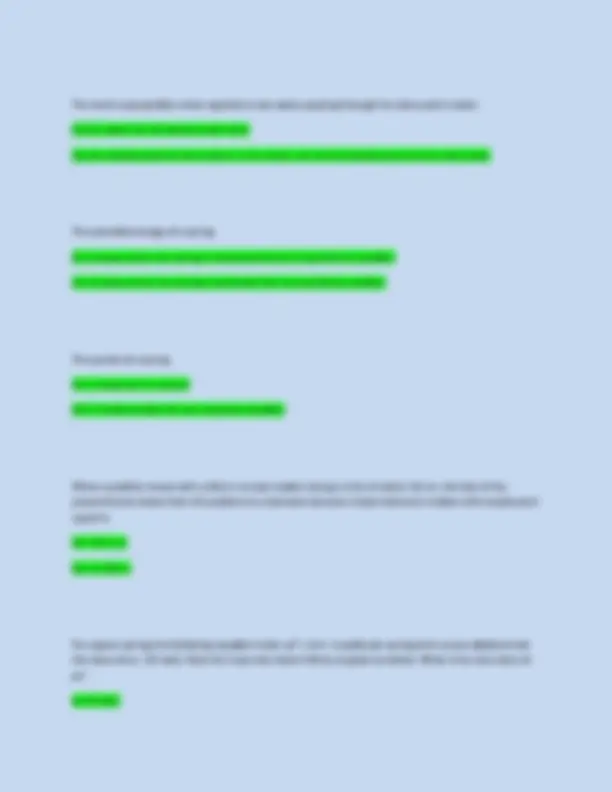
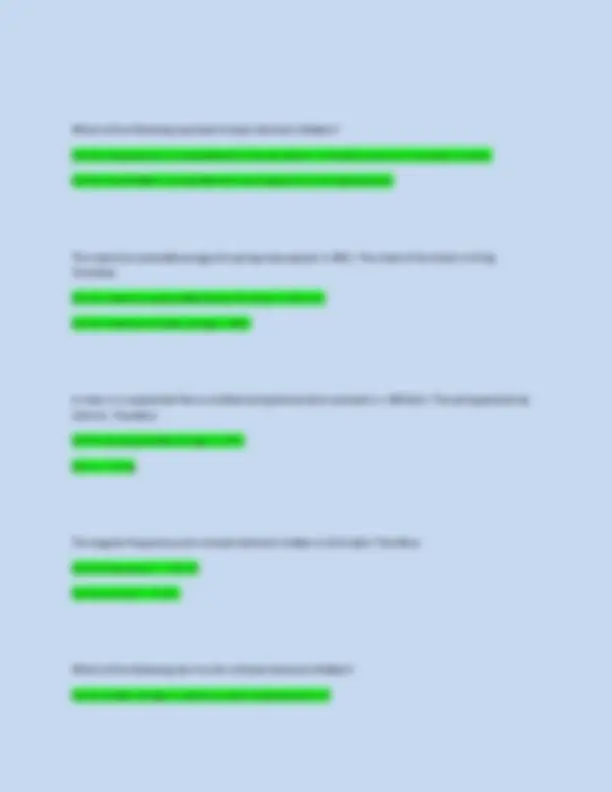
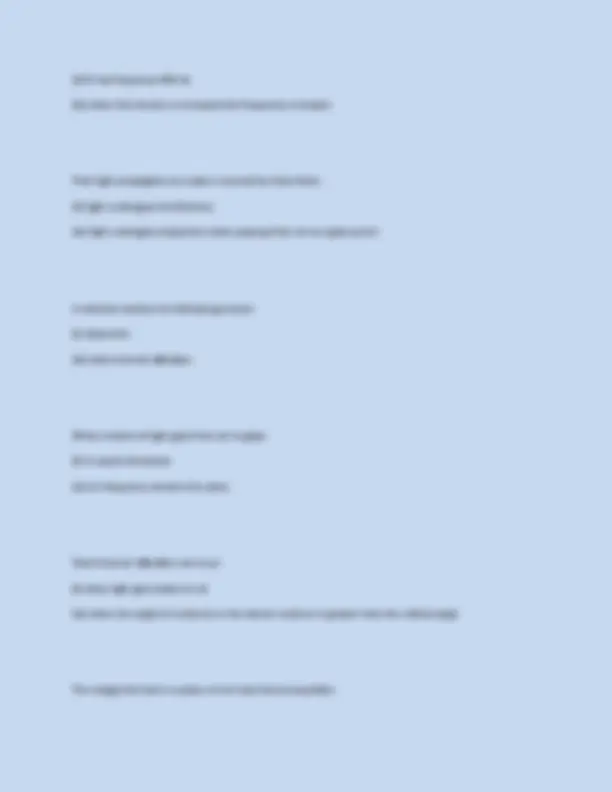
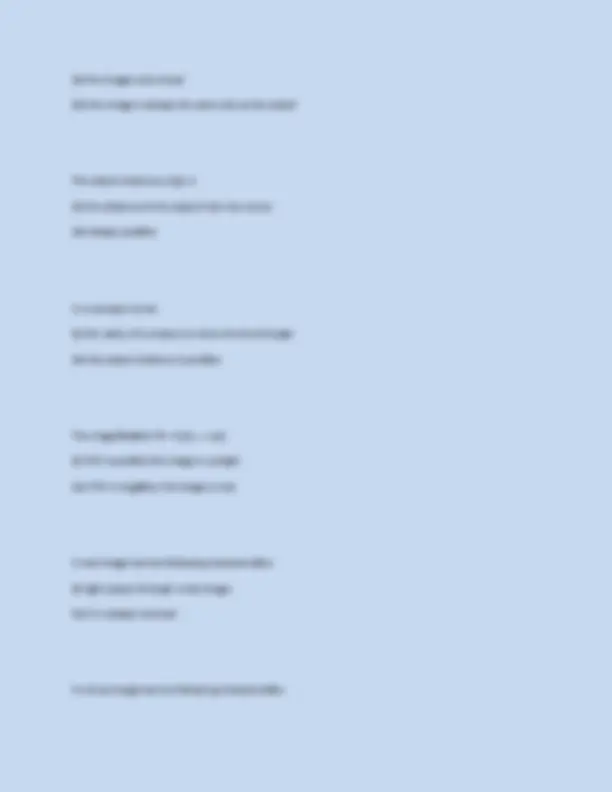
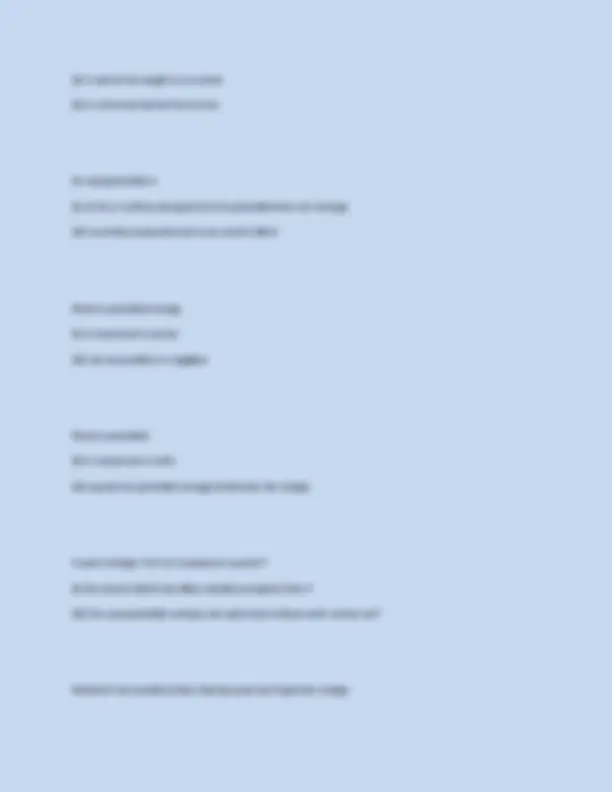
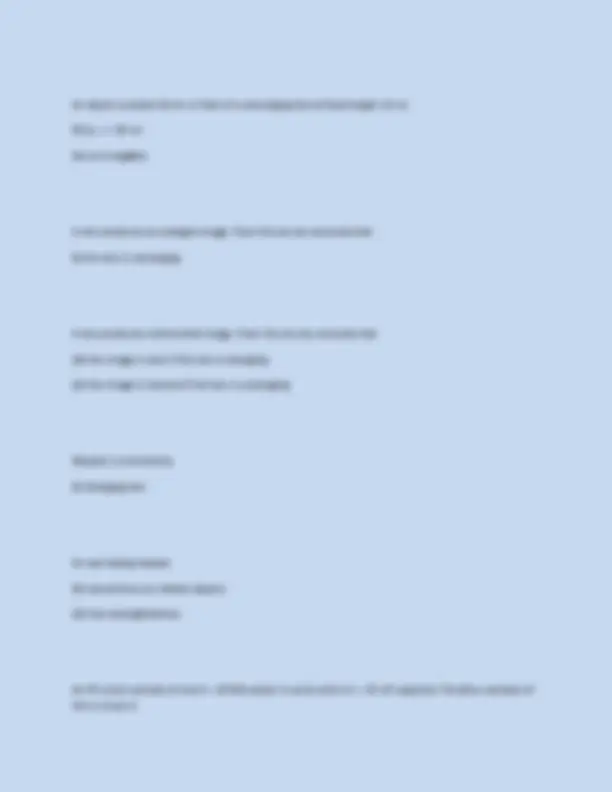
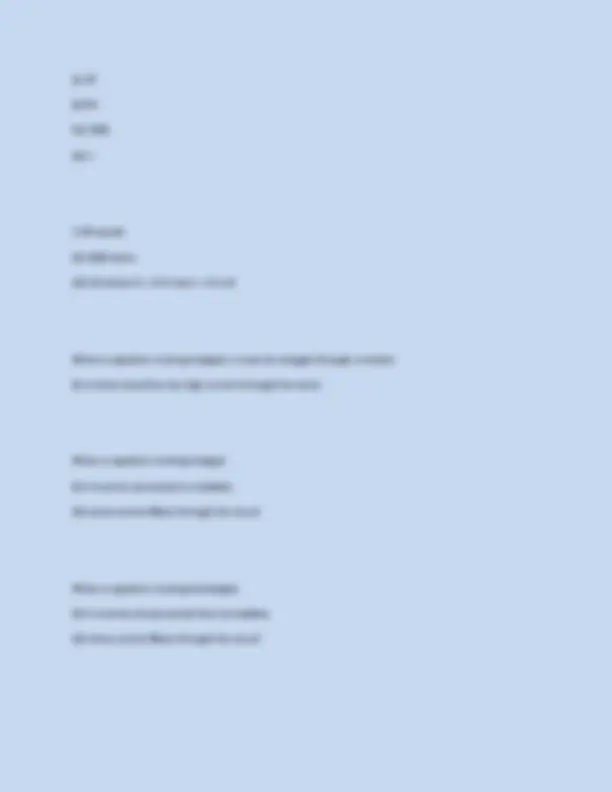
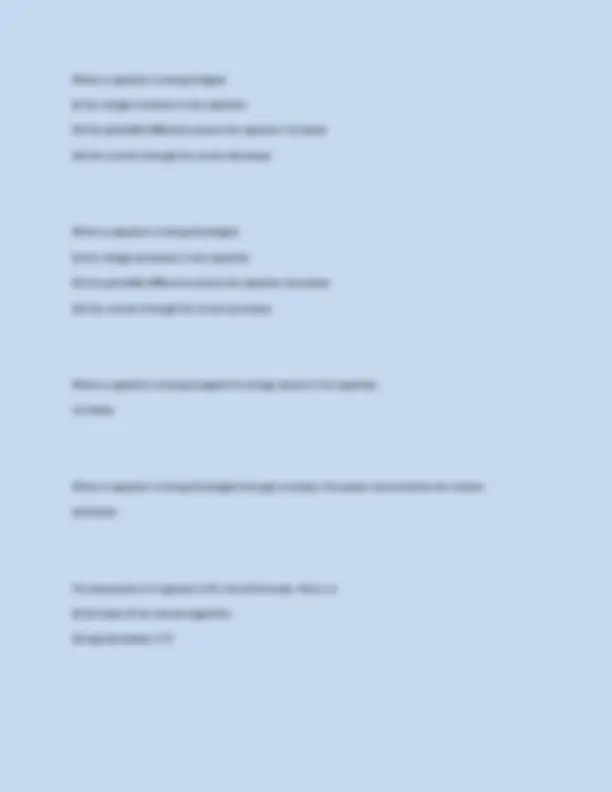
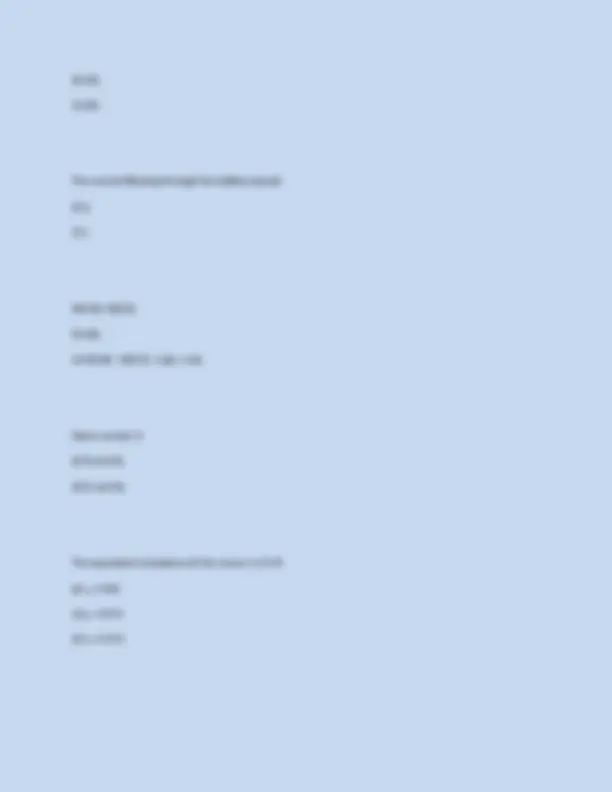
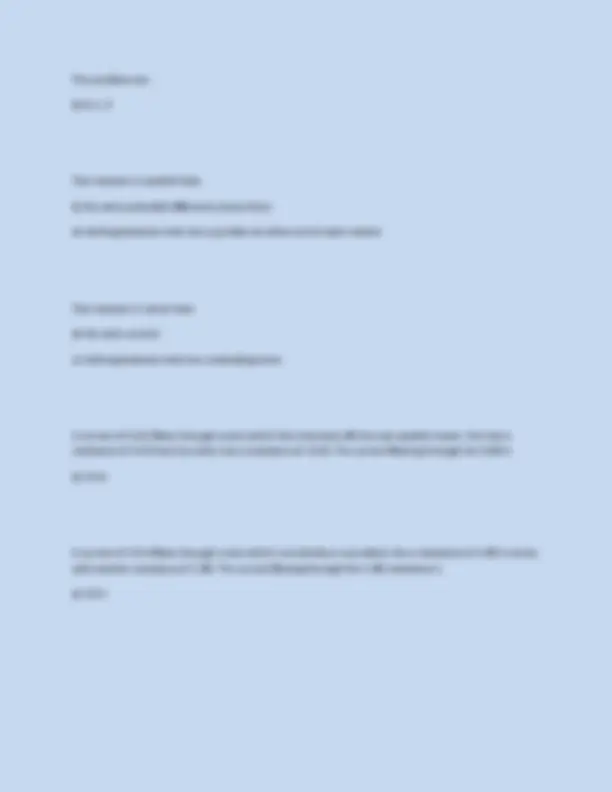


Study with the several resources on Docsity

Earn points by helping other students or get them with a premium plan


Prepare for your exams
Study with the several resources on Docsity

Earn points to download
Earn points by helping other students or get them with a premium plan
Community
Ask the community for help and clear up your study doubts
Discover the best universities in your country according to Docsity users
Free resources
Download our free guides on studying techniques, anxiety management strategies, and thesis advice from Docsity tutors
Physics 2020 Final Exam 88 Quiz Principles Of Physics 2 For Pre-Health Students Questions And Answers 2025/2026.
Typology: Exams
1 / 19

This page cannot be seen from the preview
Don't miss anything!












The human ear can hear between 20 Hz and 20000 Hz. So
(i) 15 Hz is infrasonic
(ii) 25000 Hz is ultrasonic
(iii) 40000 Hz is supersonic
(iv) 10 Hz is subsonic
(i) 15 Hz is infrasonic
(ii) 25000 Hz is ultrasonic
The following quantities are measured in watts (W)
(i) power
(ii) sound intensity
(iii) sound intensity level
(iv) energy spent or produced per unit time
(i) power
(iv) energy spent or produced per unit time
The symbol β is used for
(i) sound intensity
(ii) sound intensity level
(iii) decibel level
(iv) power
(ii) sound intensity level
(iii) decibel level
Log(4000)^10 is equal to
(i) 4 * 10^
(ii) 3 + log 4
(iii) 3.
(iv) log 4 * log 1000
(ii) 3 + log 4
(iii) 3.
A train A blows a whistle at 600 Hz. A passenger in a train B hears a frequency of 620 Hz. From this, it follows that
(i) A is stationary and B is moving towards A
(ii) the distance between A and B is decreasing with time
(iii) B is stationary and A is moving towards B
(iv) the passenger in B will see train A coming closer
(ii) the distance between A and B is decreasing with time
(iv) the passenger in B will see train A coming closer
The word superposition when applied to two waves passing through the same point means
(ii) the waves do not destroy each other
(iv) the displacement of the medium is the vector sum of the displacements due to each wave
The potential energy of a spring
(i) increases when the spring is compressed from its equilibrium position
(ii) increases when the spring is extended from its equilibrium position
The period of a spring
(ii) is measured in seconds
(iv) is the time taken for one complete vibration
When a particle moves with uniform circular motion along a circle of radius 10 cm, the foot of the perpendicular drawn from this particle to a diameter executes simple harmonic motion with amplitude A equal to
(ii) +10.0 cm
(iv) +0.100 m
For a given spring the following equation holds: ω² = k/m. A particular spring with a mass attached had the value of ω = 20 rad/s. Now the mass was made 4 times as great as before. What is the new value of ω?
a) 10 rad/s
Which of the following represent Simple Harmonic Motion?
(iii) the displacement is proportional to Cos ωt where t is the time and ω is a constant number.
(iv) the acceleration is proportional to and opposite to the displacement
The maximum potential energy of a spring mass system is 300 J. The mass of the block is 6.0 kg Therefore
(ii) the maximum speed attained by the block is 10.0 m/s
(iii) the maximum kinetic energy is 300 J
A mass m is suspended from a vertical spring whose force constant k = 490 N/m. The spring extends by 10.0 cm. Therefore
(ii) the spring potential energy is 2.45 J
(iii) m = 5.0 kg
The angular frequency ω of a simple harmonic motion is 12.0 rad/s. Therefore
(ii) the frequency f = 1.91 Hz
(iv) the period T = 0.52 s
Which of the following are true for a Simple Harmonic Motion?
(ii) the kinetic energy is maximum when displacement is 0
(iii) the fundamental is 120 Hz
An external periodic force of 340 Hz acts on a vibrating object having natural frequency f.
(ii) there is resonance if f is equal to 340 Hz
(iv) the amplitude is maximum if f is equal to 340 Hz
An air column is in a cylinder with one end open
(iii) there will be an antinode at the open end
(iv) there will be a node at the closed end
The air column in a cylinder with one end open and the other closed is vibrating in the first harmonic
(iii) there is only one node
(iv) there is only one antinode
Two strings A and B sounded together. 3 beats are heard. If A has frequency 240 Hz, which of the possibilities can be true?
(i) B has frequency 237 Hz
(iii) B has frequency 243 Hz
String A has frequency 400 Hz. It is sounded with string B and 4 beats are heard. String A is tightened (greater tension) until 4 beats are heard again with string B
(ii) B has frequency 404 Hz
(iii) when the tension is increased the frequency increases
That light propagates as a wave is proved by these facts:
(ii) light undergoes interference
(iv) light undergoes dispersion when passing from air to a glass prism
A rainbow involves the following process
(i) dispersion
(iii) total internal reflection
When a beam of light goes from air to glass
(i) its speed decreases
(iv) its frequency remains the same
Total internal reflection can occur
(i) when light goes water to air
(iv) when the angle of incidence in the denser medium is greater than the critical angle
The images formed in a plane mirror have these properties
(i) it cannot be caught on a screen
(ii) it is formed behind the mirror
An equipotential is
(i) a line or surface along which the potential does not change
(iii) a surface perpendicular to an electric field
Electric potential energy
(i) is measured in joules
(iii) can be positive or negative
Electric potential
(ii) is measured in volts
(iii) equals the potential energy divided by the charge
A point charge +5.0 nC is placed at a point P
(i) the electric field lines flow radially outwards from P
(iii) the equipotential surfaces are spherical surfaces with centers at P
Between two parallel plates having equal and opposite charge
(i) the equipotential surfaces are parallel to the plates
(iii) the electric field is perpendicular to the plates
A charged object moves freely in an electric field until its potential energy decreases by 100 J.
(i) the work done by the field on the charge is 100 J
(iii) the increase in kinetic energy of the object is 100 J
Two charges A and B are placed close to each other
(ii) if the potential energy is positive then A and B have the same sign
(iii) if the potential energy is negative then A and B have opposite signs
Two equal and opposite charges are placed on the X axis at equal distances from the origin
(ii) their potential energy is negative
(iii) the potential at the origin is 0
A charge of +2.0 nC is given to a conductor in the shape of a sphere
(ii) the charge will rest entirely on the surface of the sphere
(iii) the electric field is perpendicular to the surface of the sphere
At every point in an electric field there is also an electric potential
An object is placed 10 cm in front of a converging lens of focal length 12 cm
(ii) dₒ = + 10 cm
(iv) dᵢ is negative
A lens produces an enlarged image. From this we can conclude that
(i) the lens is converging
A lens produces a diminished image. From this we can conclude that
(iii) the image is erect if the lens is diverging
(iv) the image is inverted if the lens is converging
Myopia is corrected by
(i) diverging lens
An eye having myopia
(ii) cannot focus on distant objects
(iii) has nearsightedness
An RC circuit consists of one R = 20 kΩ resistor in series with a C = 15 mF capacitor. The time constant of this is circuit is
(i) CR
(ii) RC
(iv) 300s
(vi) 𝜏
1 kΩ equals
(ii) 1000 ohms
(iii) V/I where V = 12 V and I = 12 mA
When a capacitor is being charged, it must be charged through a resistor
(i) or there would be too high current through the wires
When a capacitor is being charged
(i) it must be connected to a battery
(iii) some current flows through the circuit
When a capacitor is being discharged
(ii) it must be disconnected from the battery
(iii) some current flows through the circuit
Two rods made of dissimilar materials were rubbed with different cloths. Rod A was rubbed with a silk cloth, and rod B with a fur cloth. When brought close together, the rods attracted. Consider the following possibilities:
(ii) A was glass and B was rubber
(iii) A had a positive charge and B had a negative charge
(v) the silk cloth had negative charge and the fur cloth had positive charge
Charging an object:
(i) insulators can be charged by rubbing
(iii) when we charge a conductor by conduction there must be contact with the charging object
(v) when we charge a conductor by induction there is no contact with the charging object
Two charges of 2.0 nC and 5.0 nC are kept 100 cm apart. What is the magnitude of the force between them?
9.0 x 10^-8 N
The electric field at a point has the magnitude 2.0 N/C. What is the magnitude of the force experienced by a charge of 2.5 nC placed at this point?
5.0 x 10^-9 N
Electric field lines
(i) flow out of positive charges
(iv) cannot cross each other
(v) flow into negative charges
Which of the following choices provides a list of ALL and ONLY the true junctions in the circuit?
F, G, L, M, J, K, B, C
Find the parallel capacitors. (Remember that two or more junctions with nothing but a connecting wire between them can be collapsed into a single junction)
(iii) 7 and 8
(iv) 9 and 10
Find the capacitor pairs that are in series
c) only iii
Two capacitors A (6.0 nF) and B (5.0 nF) are connected in series.
They store the same amount of charge
Two capacitors A (6.0 nF) and B (5.0 nF) are connected in parallel.
A stores more charge
V(lil B) - V(lil C)
The junctions are
b) B, C, E
Two resistors in parallel have
b) the same potential difference across them
d) nothing between them but a junction at either end of each resistor
Two resistors in series have
a) the same current
c) nothing between them but conducting wires
A current of 6.0 A flows through a wire which then branches off into two parallel routes. One has a resistance of 2.0 Ω and the other has a resistance of 1.0 Ω. The current flowing through the 2.0Ω is
b) 2.0 A
A current of 3.0 A flows through a wire which runs (without a junction) into a resistance of 2.0Ω in series with another resistance of 1.0Ω. The current flowing through the 1.0Ω resistance is
a) 3.0 A